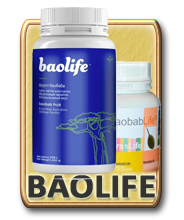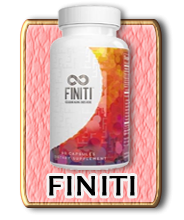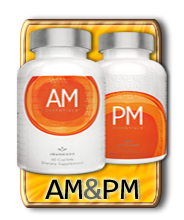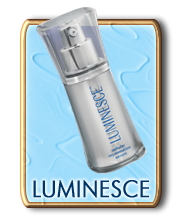Научные исследования свойств Баобаба
Хотя о полезных свойствах баобаба известно с древности, интенсивные научные исследования этого удивительного дерева начались сравнительно недавно, около 30 лет назад.
В настоящий момент выявлены и доказаны многочисленные целебные и питательные свойства баобаба.
Большинство научных работ, посвящённых баобабу, выполнены учёными Италии, Франции, Германии, Дании и африканских стран. Ниже даны ссылки на основные результаты научных исследований свойств баобаба .
Баобаб (Adansonia digitata):
основная научная и медицинская библиография
- Kaboré D., Sawadogo-Lingani H., Jakobsen M. and others. A review of baobab (Adansonia digitata) products: Effect of processing techniques, medicinal properties and uses // African Journal of Food Science. — 2011, №11, pp. 833-844
- Vertuani S., Braccioli E., Buzzoni V., Manfredini S. Antioxidant capacity of Adansonia digitata fruit pulp and leaves / Acta Phytoterapeutica. — Vol. V, # 2, 2002. — 6 p.
- Osman M.A. Chemical and Nutrient Analysis of Baobab (Adansonia digitata) Fruit and Seed Protein Solubility / Plant foods for human nutrition. — Vol. 59. — #1, 2004, pp.29-33
- Chadareab F.J., Linnemannb A.R., Hounhouigana J.D., Noutb M.J.R., Van Boekelb. Baobab Food Products: A Review on their Composition and Nutritional Value /Critical Reviews in Food Science and Nutrition. — Vol. 49. — Issue 3, 2008
- Nkafamiya, S.A. Osemeahon, D. Dahiru, H.A. Umaru. Studies on the chemical composition and physicochemical properties of the seeds of baobab ( Adasonia digitata)/ African Journal of Biotechnology.- Vol 6. — No 6, 2007
- Emmy De Caluwé, Kateřina Halamová, Patrick Van Damme. Baobab (Adansonia digitata L.): A Review of Traditional Uses, Phytochemistry and Pharmacology/African Natural Plant Products: New Discoveries and Challenges in Chemistry and Quality, 2009. — Chapter 4. — pp 51–84
- Nour A.A., Magboul B.I., Kheiri, N.H. Chemical composition of baobab fruit (Adansonia digitata L) / Trop. Sci., — 1980, # 22. — P. 383-388.
- Abdalla A.A., Mohammed M.A., Mudawi H.A. Production and Quality Assessment of Instant Baobab (Adansonia digitata L.) / Advance Journal of Food Science and Technology #2(2), 2010. — P. 125-133
- Manfredini S., Vertuani S., Buzzoni V. Adansonia Digitata. Il Baobab Farmacista / Integr. Nutr., 2002. — # 5(4). — P, 25-29
- Nnam N.M., Obiakor P.N. EFFECT OF FERMENTATION ON THE NUTRIENT AND ANTINUTRIENT COMPOSITION OF BAOBAB (ADANSONIA DIGITATA) SEEDS AND RICE (ORYZA SATIVA) GRAINS / Ecology of Food and Nutrition. — Vol. 42. — Issue 4-5, 2003. — pp. 265-277
- Al-Qarawi A. A., Al-Damegh M. A., El-Mougy S. A. Hepatoprotective Influence of Adansonia digitata Pulp /Journal of Herbs, Spices & Medicinal Plants, 2003. — Vol. 10(3). — 6 p.
- Sidibe M., Scheuring J.F., Tembely D., Sidibe M.M., P. Hofman, M.Frigg. Baobab-homegrown vitamin C for Africa / Agroforestry Today, 1996. — #8(2). — P. 13-15.
- Ramadan A., Harraz F.M., ElMougy S.A. Anti-inflammatory, alalgesic and antipyretic effects of the fruit pulp of Adansonia digitata / Fitoterapia, 1994 . — #65. — P. 418-422.
- Selvarani, Hudson J.B. Multiple inflammatory and antiviral activities in Adansoniz digitata (Baobab) leaves, fruits and seeds / Journal of Medical Plants Research, 2009. — Vol.3(8). — P. 576-582
- Arama E, Michaud P, Rouffiac R, Rodriguez F. Un nouvel excipient en formulation pharmaceutique de comprimés de théophylline, type matrice hydrophile: la pulpe de fruit du baobab (Adansonia digitata L.) / Farmaco [Prat], 1988 .- #43(10). — P. 303-15
- Tal-Dia A., Toure K., Sarr O., Sarr M., Cisse M.F., Garnier P, Wone I. A baobab solution for the prevention and treatment of acute dehydration in infantile diarrhea / Dakar Med., 1997. — №42(1). — P. 68-73
- Afolabi O. R., Popoola T. O. S. The effects of baobab pulp powder on the micro flora involved in tempe fermentation / Eur. Food Res. Technol., 2005. — # 220. — P. 187–190
- Sidibe M., Williams J.T. Baobab. Adansonia digitata / International Centre for Under-utilized Crops, Southampton, UK, 2002. — 105 p.
- Adesanya S.A., Idowu T.B., Elujoba A.A. Antisickling activity of Adansonia digitata / Planta medica, 1988. — #54 (4). — P. 374-375
- Gebauer J., El-Siddig K., Ebert G. Baobab (Adansonia digitata L.): a Review on a Multipurpose Tree with Promising Future in the Sudan / Gartenbauwissenschaft, 2002, # 67 (4). P. 155–160
- Manfredini S., Vertuani S., Braccioli E., Buzzoni V. Capacitá antiossidante dei derivati del Baobab / Erboristeria domani, 2003. — # 2. — P. 52-59.
- Eteshola E., Oraedu A.C.I. Fatty acid compositions of tigernut tubers (Cyperus esculentus L.), baobab seeds (Adansonia digitata L.), and their mixture / Journal of the American Oil Chemists’ Society, 1996 . — Vol.73, #2. — P. 255-257
- Scheuring J.F., Sidibé M., Frigg M. Malian agronomic research identifies local baobab tree as source of vitamin A and vitamin C / Sight and Life. Newsletter, 1999. — #1. — P.21-24
- Lamien-Meda A., Lamien C.E., Moussa M.Y. Compaoré, Roland N.T. Meda, Kiendrebeogo M., Zeba B., Millogo J.F., Odile G. Nacoulma. Polyphenol Content and Antioxidant Activity of Fourteen Wild Edible Fruits from Burkina Faso / Molecules, 2008. — #13. — P. 581-594
- Magdi A. Osman. Chemical and Nutrient Analysis of Baobab (Adansonia digitata) Fruit and Seed Protein Solubility / Plant Foods for Human Nutrition, 2004.- #59.- P. 29–33
- Sipra-Dan, Dan S. Phytochemical study of Adansonia digitata, Coccoloba excoriata, Psycotria adenophylla and Schleichera oleosa / Fitoterapia, 1986. — #57. — P. 445-446.
- Yazzie D., Vanderjagt D.J., Pastuzyn A., Okolo A., Glew R.H. The amino acid and mineral content of baobab (Adansonia digitata L.) leaves / J. Food Composit., 1994. — Anal. 7. — P. 189–193.
- Ikechukwu E. Baobab (Adansonia digitata L.) seed protein utilization in young albino rats I: biochemical ingredients and performance characteristics / Animal Research International, 2005. — # 2(1). — P. 240 – 245
- Ananil K., Hudson J.B., de Souzal C., Akpaganal K., Tower G.H.N., Amason J.T., Gbeassor M. Investigation of medicinal plants of Togo for antiviral and antimicrobial activities /Pharmaceutical Biology, 2000 .- Vol. 38. — # l. — P. 40-45
- Hudson J.B., Ananil K., Lee MX., de Souzal C., Arnason J.T., Gbeassor M. Further investigations on the antiviral activities of medicinal plants of Togo / Pharmaceutical Biology, 2000.- Vol. 38, # l. — P. 46-50
- Andrianaivo-Rafehivola A.A., Blond J.P., Cao J.M., Gaydou E. E., Bezard J. Influence of cyclopropene fatty-acids (baobab seed oil) feeding on the in vitro delta-9 desaturation of stearic acid in rat liver microsomes / Journal of Nutritional Biochemistry, 1993. — #4(2). — P. 92-96
- Bianchini J P, Ralaimanarivo A, Gaydou E M and Waegell B. Hydrocarbons, sterols and tocopherols in the seeds of six Adansonia species / Phytochemistry, 1982. — # 21(8). — P. 1981-1987
- Eromosele I.C., Eromosele C.O., Kuzhkuzha D.M. Evaluation of mineral elements and ascorbic acid contents in fruits of some wild plants / Plant Foods for Human Nutrition, 1991. — 41(2). — P. 151-154
- Essien A.I., Fetuga B.L. Carotene content and some characteristics of under-exploited seed oils of forest trees in Nigeria / Food Chemistry, 1989. — # 32(2). — P. 109-116
- Gaiwe R., Nkulinkiye Nfura T., Bassene E., Olschwang D., Ba D, Pousset J.L. Calcium and mucilage in the leaves of Adansonia digitata (baobab). Calcium et mucilage dans les feuilles de Adansonia digitata (baobab) / International Journal of Crude Drug Research, 1989. — #27(2). — P. 101-104
- Arama E, Michaud P, Rouffiac R, Rodriguez F. Biodisponibilité de comprimés à libération prolongée de théophylline et de paracétamol formulés avec la pulpe de fruit du baobab (Adansonia digitata L.) / Pharm Acta Helv, 1989. — #64(4). — P. 116-120
- El-Rawy, M. Eman, S.M. Gergis, S. Bazaid, and S.A. ElMougy. The immunostimulant effect of Adansonia digitata on the immune response of chicken vaccinated with avian cholera vaccine / Journ. Egypt. Veterinary Med. Asso., 1997. — # 57. — P. 959-970
- Odetokun S.M. The nutritive value of Baobab fruit (Adansonia digitata) / Riv. Ital. Sost. Grasse, 1996. — #73. — P. 371-373
- Andrianaivo-Rafehivola A.A., Cao J. M., Gaydou E.E. Effects of Fresh and heated Baobab seed oil feeding on growth, food consumption and weight of some organs in rats / Revue Francaise des Corps Gras, 1999. — #41(3/4). — P. 53-59.
- Ralaimanerivo A., Gaydou E.M., Bianchini J.B. Fatty acid composition of seed from six Adansonia species with particular reference to cyclopropane and cydopropene acid / Lipids, 1982. — #17, — P. 1–10
- Owen J. The medico-social and cultural significance of Adansonia digitata (baobab) in African communities / African Notes, 1970. — # 6. — P. 24–36
- Gaydou E.M., Bianchini J.P., Ralaimanarivo A. African baobab oil: Adansonia digital L. Fatty acid and sterol compositon / Revue Francaise des Crops Gras, 1979. — #26. — P 447–448
- Sidibe, M., Scheuring J.F. , Kone M., Schierle J., Frigg M. A (and C) for Africa: The baobab tree
as a source of vitamins / Agroforestry Today, 1998 .- # 10. — P. 7–9 - Ibiyemi S. A., Abiodun A., Akanji S.A. Adansonia digitata, Bombax and Parkia filicoideae
Welw: Fruit pulp for the soft drink industry / Food Chemistry, 1997 . — # 28. — P. 111-116 - Milza P. Una pianta per il futuro: Il Baobab / Erboristeria domani, 2002. — # 10. — P. 40-51
- Galil N.E. Evaluation of Baobab (Gonglase) solution for home management of diarrhoea in Sudanese children / PhD Thesis in Agriculture, Jun 1996. — 152 p
- Cao J. M., Gresti J., Blond J. P., Bezard J. Effects of cyclopropenoid fatty acids (Baobab seed oil) on the faty acid profile of lipids from different tissues in the rat / Journal of Food Lipids, 1996. — #3. — P. 76-86
- Chauhan J.S., Kumar S., Chaturverdi R. A new flavinone glycoside from the roots of Adansonia digitata/ National Academy Science Letters — India, 1987. — #10(5).- P. 177-179
- Chauhan J.S., Kumar S., Chaturvedi R. A new flavanonol glycoside from Adansonia digitata roots / Planta Medica, 1984. — # 50(1) .- P.113
- Chauhan J. S., Chaturverdi R., Kumar S. A new flavinol glycoside from the stem of Adansonia digitata / Indian Journal of Chemistry, 1982 . — #21 B .- P.254-255
- Okoh P.N. An assessment of the protein, mineral and vitamin losses in sun-dried Nigerian vegetables / Nutrition Reports International, 1984. — #29(2) .- P. 359-364
- Ralaimanarivo A., Bianchini J.P., Gaydou E.M. Fatty acid and sterol compositions of seed oil from the Australian baobab: Adansonia gregorii / Rivista Italiana delle Sostanze Grasse, 1983. — # 60(12).- P. 747-751
- Ralaimanarivo A., Bianchini J.P., Gaydou E.M. Determination of melting curves for baobab oils by low resolution NMR. Revue Francaise des Corps Gras, 1981. — # 28(7-8) .- P. 315-317
- Ramesh D., Dennis T.J., Shingare M.S. Constituents of Adansonia digitata root bark. Fitoterapia, 1992 — #63(3).- P. 278-279
- Saka J.D.K., Msonthi J.D., Sambo E.Y. Dry matter, acidity and ascorbic acid contents of edible wild fruits growing in Malawi / Tropical Science, 1992. — 32(3) .- P. 217-221
- Woolfe M.L., Chaplin M.F., Otchere G. Studies on the mucilages extracted from okra fruits (Hibiscus esculentus L.) and baobab leaves Adansonia digitata L.) / Journal of the Science of Food & Agriculture, 1977. — 28(6).- P. 519-529













